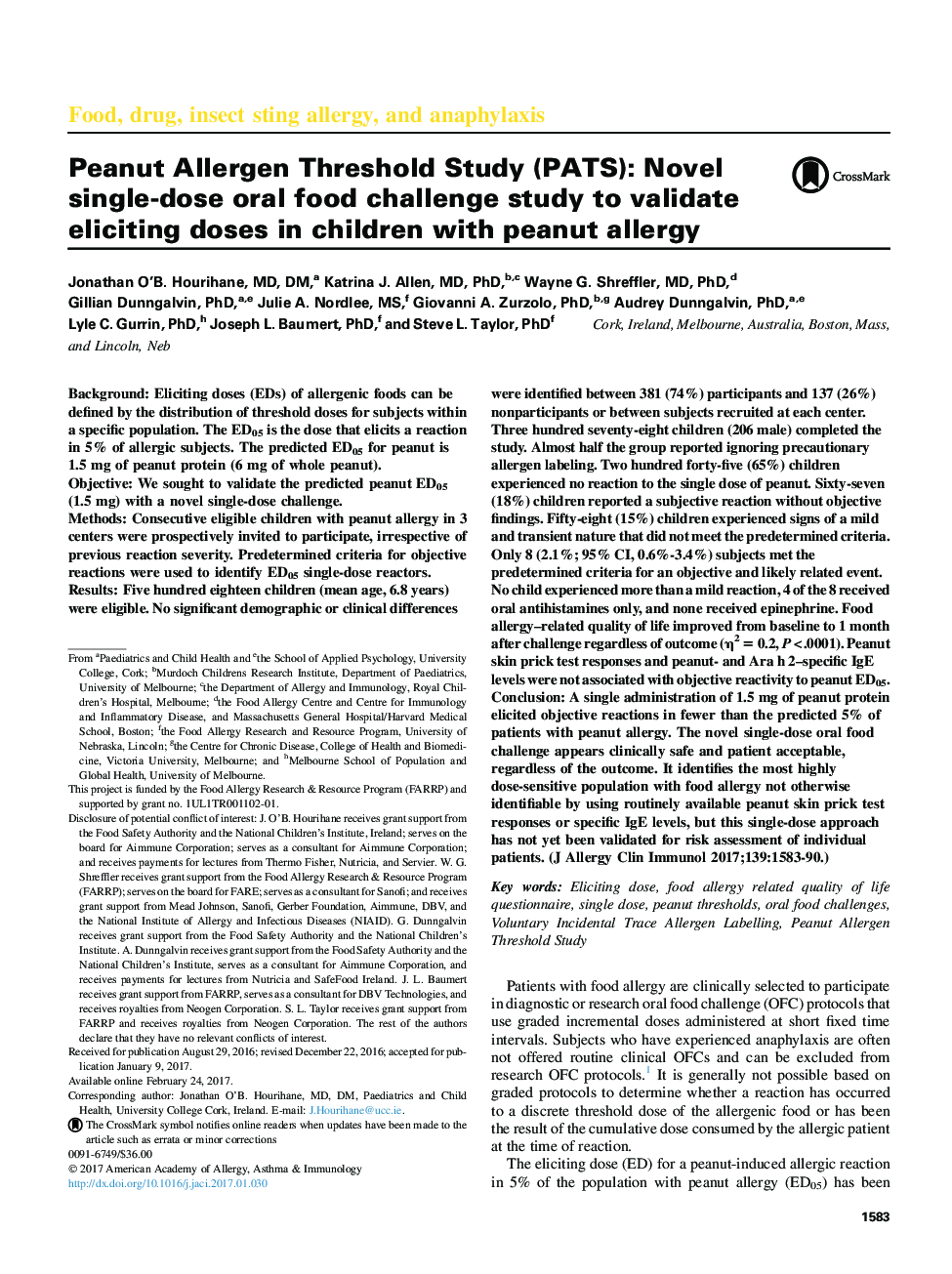| Article ID | Journal | Published Year | Pages | File Type |
|---|---|---|---|---|
| 5646601 | Journal of Allergy and Clinical Immunology | 2017 | 8 Pages |
BackgroundEliciting doses (EDs) of allergenic foods can be defined by the distribution of threshold doses for subjects within a specific population. The ED05 is the dose that elicits a reaction in 5% of allergic subjects. The predicted ED05 for peanut is 1.5 mg of peanut protein (6 mg of whole peanut).ObjectiveWe sought to validate the predicted peanut ED05 (1.5 mg) with a novel single-dose challenge.MethodsConsecutive eligible children with peanut allergy in 3 centers were prospectively invited to participate, irrespective of previous reaction severity. Predetermined criteria for objective reactions were used to identify ED05 single-dose reactors.ResultsFive hundred eighteen children (mean age, 6.8 years) were eligible. No significant demographic or clinical differences were identified between 381 (74%) participants and 137 (26%) nonparticipants or between subjects recruited at each center. Three hundred seventy-eight children (206 male) completed the study. Almost half the group reported ignoring precautionary allergen labeling. Two hundred forty-five (65%) children experienced no reaction to the single dose of peanut. Sixty-seven (18%) children reported a subjective reaction without objective findings. Fifty-eight (15%) children experienced signs of a mild and transient nature that did not meet the predetermined criteria. Only 8 (2.1%; 95% CI, 0.6%-3.4%) subjects met the predetermined criteria for an objective and likely related event. No child experienced more than a mild reaction, 4 of the 8 received oral antihistamines only, and none received epinephrine. Food allergy-related quality of life improved from baseline to 1 month after challenge regardless of outcome (η2 = 0.2, P < .0001). Peanut skin prick test responses and peanut- and Ara h 2-specific IgE levels were not associated with objective reactivity to peanut ED05.ConclusionA single administration of 1.5 mg of peanut protein elicited objective reactions in fewer than the predicted 5% of patients with peanut allergy. The novel single-dose oral food challenge appears clinically safe and patient acceptable, regardless of the outcome. It identifies the most highly dose-sensitive population with food allergy not otherwise identifiable by using routinely available peanut skin prick test responses or specific IgE levels, but this single-dose approach has not yet been validated for risk assessment of individual patients.
